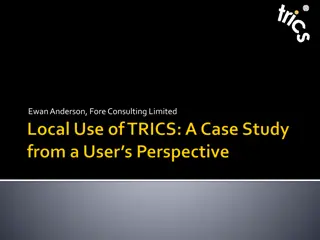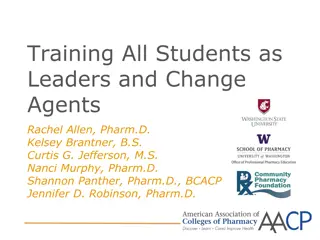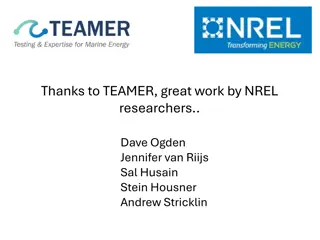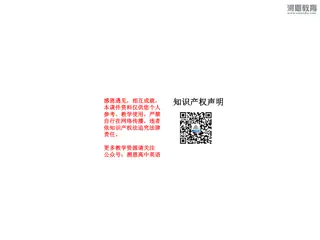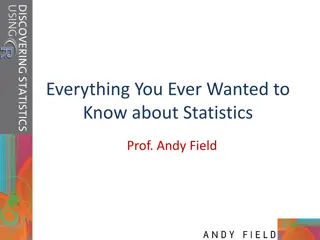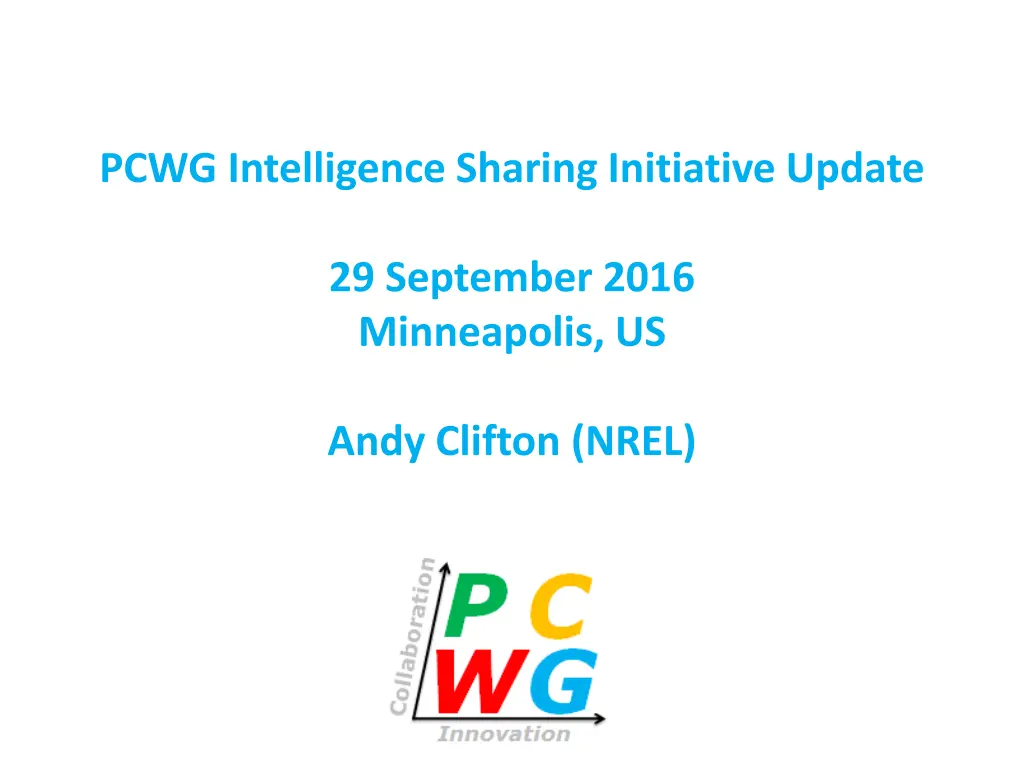
Unlocking Industry Data Potential with PCWG-Share-X
The PCWG-Share-X initiative aims to determine the best methods for predicting turbine performance in outer range conditions without sharing sensitive data. Learn how industry data can be leveraged for accurate performance modeling while respecting commercial sensitivities.
Download Presentation

Please find below an Image/Link to download the presentation.
The content on the website is provided AS IS for your information and personal use only. It may not be sold, licensed, or shared on other websites without obtaining consent from the author. If you encounter any issues during the download, it is possible that the publisher has removed the file from their server.
You are allowed to download the files provided on this website for personal or commercial use, subject to the condition that they are used lawfully. All files are the property of their respective owners.
The content on the website is provided AS IS for your information and personal use only. It may not be sold, licensed, or shared on other websites without obtaining consent from the author.
E N D
Presentation Transcript
PCWG Intelligence Sharing Initiative Update 29 September 2016 Minneapolis, US Andy Clifton (NREL)
PCWG-Share-X: What are we Trying to Achieve? Motivation: Solution: There are currently many candidate methods for predicting turbine performance in outer range conditions, but no consensus about which method works best. The Power Curve Working Group Intelligence Sharing Initiative (PCWG-Share-X) aims to objectively test many methods for predicting outer range turbine performance in order to determine which works best. The Power Curve Working Group Intelligence Sharing Initiative (PCWG-Share-X) aims to unlock the full value of our industry s data. The industry has a wealth of historic power performance data whose full potential is yet to be realised. The PCWG Intelligence Sharing Initiative enables the industry to pool the value of many datasets without actually sharing any commercially sensitive data.
PCWG-Share-X Definition Document Everything you need to know about PCWG-Share-X Download PCWG-Share-01 Definition Doc from www.pcwg.prg
PCWG-Share-X: Neutralising Commercial Sensitivities Inner Range Power Curves Extracted from the Dataset Itself: the data analysis process has been designed such that the warranted power curve is never considered. Instead a power curve is extracted from a subset of the data (Inner-Range) which is then used to model the power output in the outer-range. Intelligence Sharing, not Data Sharing: the data analysis process has been designed such that the datasets do not need to be shared outside of the participant organisations. Instead of sharing the actual data, participants will share performance metrics which describe the accuracy of the trial methodologies.
PCWG-Share-X: Data Flow Hypothesis/Trial Methodology Analysis Definition Y Analysis Definition Y Analysis Definition Y Analysis Definition Y Proprietary Dataset D Proprietary Dataset B Proprietary Dataset C Proprietary Dataset A Organization D Organization B Organization A Organization C Hypothesis Performance Metrics Combination Analysis Aggregator (NREL) How well did the trial method perform? Aggregated Hypothesis Performance Metrics
PCWG-Share-X: Error Metric Definitions For NME to be zero a method must be right on average For NMAE to be zero a method must be right all the time See PCWG-Share-01 Definition Document for Further Details
PCWG-Share-X Timeline PCWG-Share-1 50 participant datasets (4 remote sensing datasets) 3 method tested (REWS, IEC Turbulence Correction & Power Deviation Matrix) Calculation Issues: Interpolation Errors and Erroneous Outliers Dec 2015 PCWG-Share-1.1 Objective: to iron out the issues experienced during PCWG-Share-1 Two week turn-around 44 participant datasets (11 remote sensing datasets) Same 3 method tested (REWS, IEC Turbulence Correction & Power Deviation Matrix) Streamlined participation process PCWG-Share-1 Calculation Issues Resolved Sept 2016 Oct to Dec 2016 PCWG-Share-2 Objective: to test more methods and expand to more datasets Target: 100 participant datasets (25 remote sensing datasets) Additional methods to be tested e.g. 3D Power Deviation Matrix & REWS with Upflow Refined results analysis
PCWG-Share-1 vs PCWG-Share-1. Baseline normalised error i.e. before any correction PCWG-Share-1 PCWG-Share-1.1 Erroneous Outliers: unexpectedly large errors for baseline inner range Baseline Issues Resolved Spread of Baseline Outer Range Results, indicates why Outer Range Corrections are required Interpolation Issue: Smaller inner baseline errors still undesirable
PCWG-Share-1.1 Comparison of Methods (Four Cell Matrix) Low Turbulence High Turbulence High Wind Speed Worse Seek to determine which methods work well when. Percentage Reduction in Error Better PCWG-Share-2 to expand upon these results. Low Wind Speed Worse Better
PCWG-Share-1.1 Power IEC Turbulence Correction (errors by wind speed)
PCWG-Share-2 Proposed Plan Proposed PCWG-Share-2 Methods: REWS with Upflow (see August Pamplona proceedings for details). 3D power deviation matrix All previous methods (REWS, Turbulence, 2D Power Deviation Matrix) Dataset Target: 100 participant datasets (25 remote sensing datasets) Proposed PCWG-Share-2 Timeline: Mid-Oct: Release of Software with new methods implemented Mid-Nov: Submission deadline Mid-Dec: Presentation of results at December PCWG Meeting in Glasgow Possible PCWG-Share-3 Methods BEM based model: simple model or full aero-elastic (e.g. FAST) Modified Turbulence Correction (see August Pamplona proceedings for details) Machine Learning (black box approach?) Production by Height?
For Discussion PCWG-Share-2 Methods Have the right methods been proposed for PCWG-Share-2? Improvements to Error Metrics & Visualisations What improvements could be made to how method errors are reported/visualised e.g. expressing by wind speed errors as fraction of total energy instead of bin energy Making the Process Easier What improvements could be made to make participation faster and easier?
Many thanks to all PCWG-Share-1.1 Participants Join the Power Curve Working Group at: www.pcwg.org


